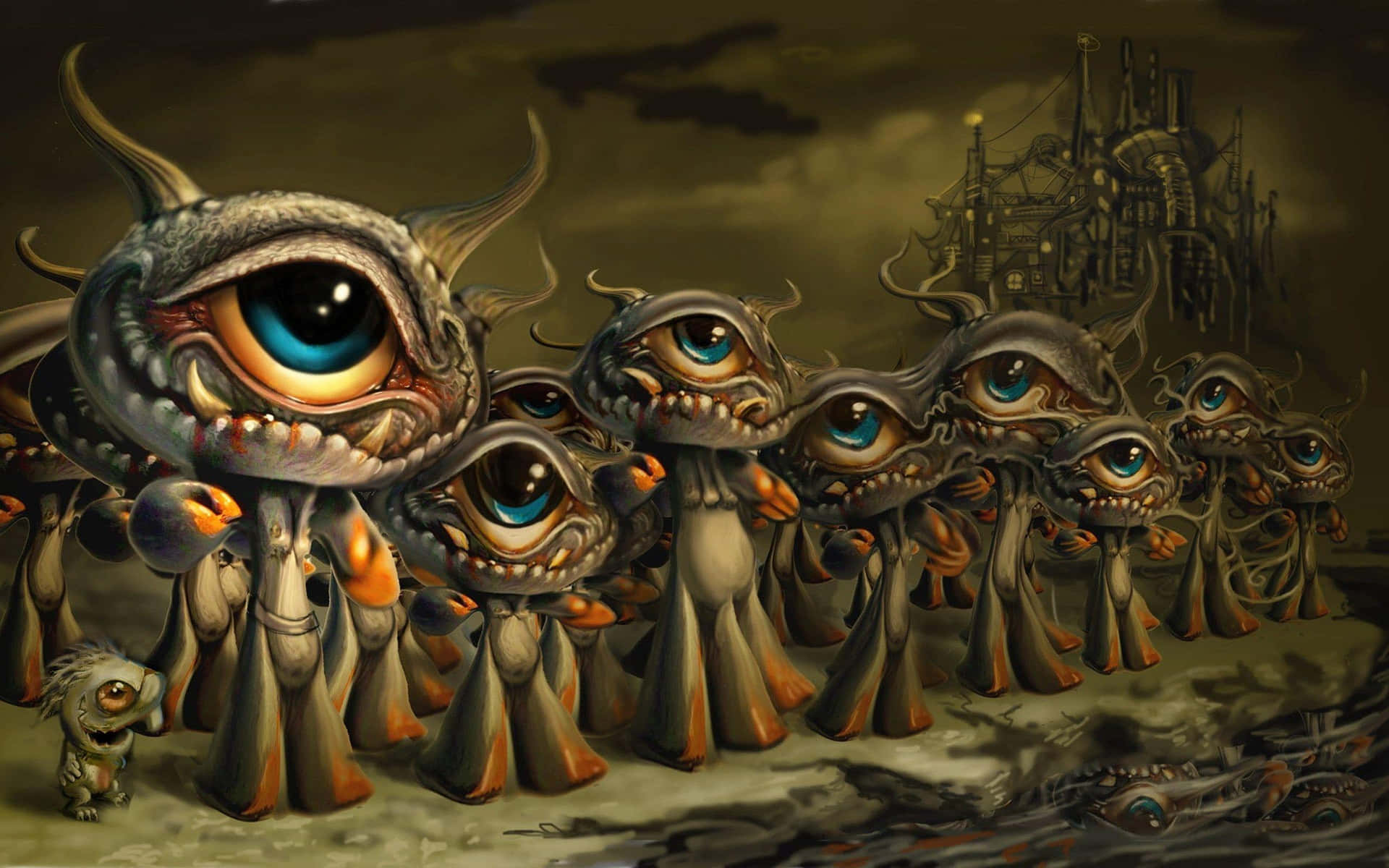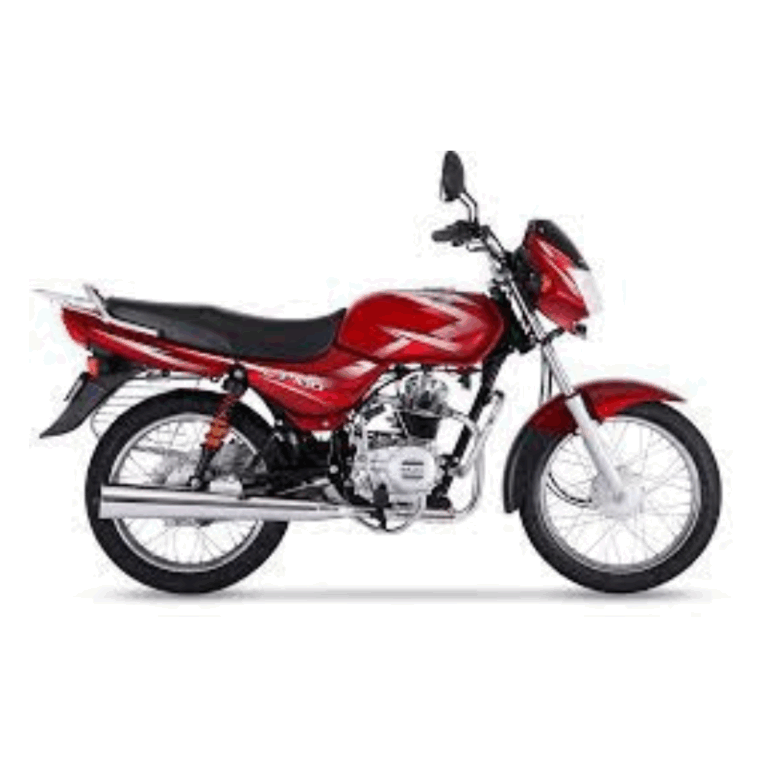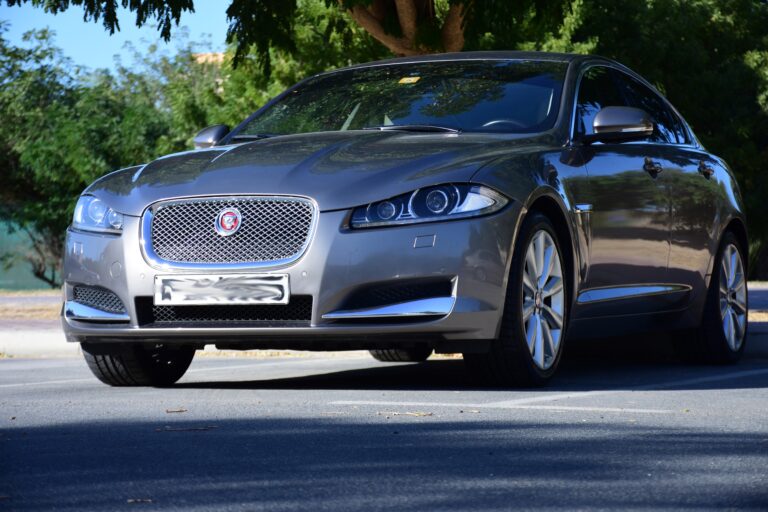Weird Car Brands: A Journey into Automotive Anomaly
Weird Car Brands: A Journey into Automotive Anomaly cars.truckstrend.com
In a world dominated by mass-produced vehicles that increasingly blend into a homogenous landscape, there exists a fascinating counter-culture: the realm of "weird car brands." These are not merely obscure manufacturers; they are the audacious outliers, the design mavericks, and the engineering eccentrics who dared to defy convention. From bizarre aesthetics to unconventional powertrains, and from niche functionalities to quirky histories, weird car brands represent the adventurous spirit of automotive innovation and the sheer joy of individuality.
Understanding these brands offers more than just a peek into automotive history; it reveals the boundaries of design, the pursuit of specialized purposes, and the passionate stories behind vehicles that refuse to be ordinary. They challenge our perceptions of what a car should be, often pushing the limits of practicality in favor of unique expression or highly specialized utility. For collectors, enthusiasts, and anyone bored by the mundane, delving into the world of weird car brands is an exhilarating journey into the truly anomalous.
Weird Car Brands: A Journey into Automotive Anomaly
The Allure of the Anomalous: What Makes a Car Brand "Weird"?
Defining "weird" in the automotive context isn’t about negative judgment; it’s about standing out, being unconventional, and often, being delightfully odd. Several key characteristics contribute to a car brand earning this unique moniker:
- Design & Aesthetics: Perhaps the most immediate indicator, weird cars often boast radical, impractical, or simply bizarre styling. Think bubble cars, wedge-shaped sports cars, or vehicles that look more like aircraft than automobiles. These designs prioritize novelty or a specific, niche aesthetic over mainstream appeal.
- Engineering & Mechanics: Beyond the skin, weird cars frequently feature unusual mechanical solutions. This could involve unconventional engine placements (like Tatra’s rear-mounted air-cooled V8s), unique suspension systems, bizarre steering mechanisms, or even propulsion methods that stretch the definition of a car (e.g., amphibious capabilities).
- Niche Market & Purpose: Many weird brands emerge from a desire to fill an extremely specific, often overlooked, niche. This might include microcars designed for extreme urban density, vehicles built for specific terrains (like military oddities adapted for civilian use), or cars with dual functionalities that seem almost whimsical. Their purpose often dictates their unusual form.
- Origin & History: The stories behind weird car brands are often as eccentric as the vehicles themselves. They might be the brainchild of visionary, sometimes madcap, inventors, or emerge from fleeting economic conditions that necessitated unusual solutions. Their short production runs, limited success, or cult followings further cement their peculiar status.
- Limited Production & Rarity: While not all rare cars are weird, many weird cars are rare. The unconventional nature of these vehicles often means they appealed to a very small segment of the population, leading to limited production numbers. This rarity contributes to their mystique and, often, their collectibility.

In essence, a weird car brand is one that consciously or unconsciously steps outside the automotive mainstream, offering a product that sparks curiosity, confusion, or outright delight due to its sheer unorthodoxy.
A Journey Through Automotive Oddities: Notable Weird Car Brands
The history of automobiles is littered with brands that dared to be different. Here are some iconic examples that embody the spirit of "weird":
- Peel Engineering (UK): Famous for the Peel P50 and Trident. The P50 holds the Guinness World Record for the smallest production car ever made. At just 54 inches long and 39 inches wide, it’s a single-seater with no reverse gear (you lift the car by a handle at the back). The Trident was slightly larger, with a distinctive bubble canopy. These microcars were the ultimate answer to urban congestion, albeit with extreme compromises.
- Amphicar (Germany): The Amphicar Model 770, produced in the 1960s, is the only successful mass-produced amphibious civilian automobile. Equipped with two propellers at the rear and a unique sealing system, it could drive on land and then transition seamlessly to water. While slow in both environments, its dual capability made it an undeniable marvel of quirky engineering.
- Messerschmitt (Germany): After WWII, German aircraft manufacturer Messerschmitt was forbidden from producing planes. Designer Fritz Fend, known for his invalid carriages, partnered with them to produce the "Kabinenroller" (cabin scooter) series, most notably the KR200. These "bubble cars" featured tandem seating, a clear acrylic bubble canopy, and a steering bar like an airplane. They were a fascinating blend of minimalist transportation and aircraft design.
- Reliant (UK): While producing various three-wheeled vehicles, the Reliant Robin is arguably their most iconic and "weirdest" export. Its lightweight fiberglass body and single front wheel made it susceptible to tipping, leading to its infamous reputation. Despite its quirks, it gained a cult following in the UK due to its low running costs and ability to be driven on a motorcycle license.
- Tatra (Czechoslovakia): Particularly the pre-war and post-war models like the T77, T87, and T603. Tatra cars were renowned for their advanced, aerodynamic, rear-engine, air-cooled V8 designs. With distinctive central fins, streamlined bodies, and luxurious interiors, they were far ahead of their time, but their unique weight distribution (and a tendency for oversteer) required skilled drivers.
- Bond Cars (UK): A smaller manufacturer that often utilized Reliant chassis. The Bond Bug, produced in the 1970s, was a striking three-wheeled, wedge-shaped microcar with a lift-up canopy for entry. Its vibrant orange color and futuristic design made it an instant eye-catcher, epitomizing the era’s adventurous spirit in small car design.
- Aptera (USA – modern resurgence): While a newer brand, Aptera perfectly embodies the "weird" in modern innovation. Their three-wheeled, ultra-aerodynamic electric vehicles are designed for extreme efficiency, boasting integrated solar panels that can provide enough energy for most daily commutes, earning them the claim of "never charge." Their teardrop shape and covered wheels are undeniably unique.


These brands, among many others, represent a delightful deviation from the automotive norm, each telling a unique story of engineering ambition, design audacity, or a quirky solution to a specific problem.
The Benefits and Challenges of Embracing the Eccentric
Owning or appreciating a weird car brand comes with a unique set of pros and cons:
Benefits:
- Uniqueness & Exclusivity: Driving a weird car guarantees you won’t blend into traffic. They are instant conversation starters and reflect a unique personality.
- Investment Potential: Many weird cars, especially rare or historically significant ones, can appreciate significantly in value, becoming coveted collector’s items.
- Unique Driving Experience: Their unconventional engineering often translates to a distinctive and memorable driving feel, unlike anything mass-produced.
- Community & Camaraderie: Owners of weird cars often belong to tight-knit enthusiast communities, offering support, shared knowledge, and a sense of belonging.
- Supporting Innovation: By valuing these outliers, we encourage the spirit of experimentation and diversity in automotive design, preventing stagnation.
Challenges:
- Parts Scarcity & Cost: Finding replacement parts for low-production, niche, or discontinued weird cars can be incredibly difficult and expensive, often requiring custom fabrication.
- Maintenance & Repair Complexity: Few mechanics have the specialized knowledge or tools to work on these unique vehicles, leading to higher labor costs and potentially long downtimes.
- Reliability Issues: Many early or experimental weird cars were not built to the same reliability standards as mainstream vehicles, meaning more frequent breakdowns or quirks.
- Safety Standards: Older weird cars may lack modern safety features like airbags, ABS, or robust crumple zones, making them less safe in collisions.
- Practicality: Many weird cars are inherently impractical for daily use due to their size, limited passenger/cargo capacity, performance, or specialized nature.
- Resale Volatility: While some weird cars become highly valuable, others remain niche and difficult to sell, making their market value unpredictable.
Navigating the Niche: Tips for Buying and Owning a Weird Car
For those drawn to the allure of automotive oddities, embarking on the journey of acquiring and maintaining a weird car requires careful consideration and practical steps:
- Thorough Research is Paramount: Before even looking at specific vehicles, immerse yourself in the brand’s history, common mechanical issues, and ownership experiences. Understand its quirks, strengths, and weaknesses.
- Join Enthusiast Clubs and Online Forums: This is perhaps the single most important step. These communities are invaluable resources for finding parts, specialist mechanics, technical advice, and even leads on cars for sale.
- Find a Specialist Mechanic: Unless you’re a skilled mechanic yourself, identify a workshop or individual with experience working on your chosen brand or type of weird car. General mechanics may cause more harm than good.
- Budget for Maintenance and Unexpected Costs: Weird cars almost always require more attention and financial outlay than conventional vehicles. Set aside a significant budget for repairs, custom parts, and specialized labor.
- Assess Your Practical Needs: Be realistic about how you intend to use the car. Is it a weekend toy, a showpiece, or do you genuinely expect to use it for daily commuting? Many weird cars are not suited for everyday tasks.
- Secure Appropriate Storage and Insurance: Given their rarity and unique nature, weird cars often require specialized insurance policies and secure, climate-controlled storage to protect your investment.
- Conduct a Pre-Purchase Inspection (PPI) by a Specialist: Never buy a weird car without a comprehensive PPI from someone who truly understands the specific model. They can identify hidden problems that a general inspection would miss.
- Test Drive Extensively (if possible): Understand the car’s unique driving dynamics. Some weird cars handle very differently from mainstream vehicles, and you need to be comfortable with their quirks.
- Verify Authenticity and Provenance: For rare or high-value weird cars, ensure you have documentation of its history, ownership, and any significant repairs or restorations.
Embracing a weird car is a commitment to passion over practicality, but with the right approach, it can be an incredibly rewarding experience.
Weird Car Brands: A Price Guide (Collectible Value Estimates)
The "price" of weird car brands is highly variable, often reflecting their rarity, historical significance, condition, and the whims of the collector market rather than a fixed MSRP. The table below offers estimated collectible value ranges for specific models from notable weird car brands, based on current auction results and market trends. These are not retail prices for new cars.
| Brand Name & Model | Country of Origin | Key "Weird" Characteristic | Est. Collectible Value Range (USD) | Notes |
|---|---|---|---|---|
| Peel P50 | UK | World’s smallest production car; 3 wheels; no reverse gear (you lift it!) | $100,000 – $150,000+ | Extremely rare; highly coveted collector’s item due to its unique size and Guinness World Record status. |
| Amphicar Model 770 | Germany | Only successful mass-produced amphibious civilian car; drives on land & floats on water. | $70,000 – $120,000+ | Values vary greatly with condition and operational capability in water; unique dual-purpose vehicle. |
| Messerschmitt KR200 | Germany | Bubble car; tandem seating; aircraft-style canopy and steering bar. | $40,000 – $70,000+ | Iconic microcar; values influenced by restoration quality and originality. |
| Reliant Robin | UK | Three-wheeled fiberglass car; known for its instability; can be driven on a motorcycle license. | $5,000 – $15,000 | Cultural icon in the UK; lower value due to higher production numbers, but unique appeal. |
| Tatra T87 | Czechoslovakia | Advanced aerodynamic design; rear-mounted air-cooled V8 engine; central fin. | $100,000 – $250,000+ | Highly sought after by collectors for its groundbreaking engineering and striking design. |
| Bond Bug | UK | Three-wheeled; distinctive wedge shape; lift-up canopy entry. | $15,000 – $30,000 | Funky 1970s design; appeal is largely nostalgic and aesthetic. |
| Aptera (New Generation) | USA | Solar-powered electric vehicle; 3 wheels; extreme aerodynamic efficiency. | $25,000 – $50,000 (pre-order) | Values are pre-production estimates; represents the cutting edge of "weird" efficiency and design. |
Note: These values are estimates and can fluctuate significantly based on market demand, vehicle condition, provenance, and specific model year/variant. Always consult a specialist for current valuations.
Frequently Asked Questions (FAQ) about Weird Car Brands
Q1: What exactly defines a "weird car brand"?
A1: A "weird car brand" typically refers to a manufacturer known for producing vehicles with highly unconventional designs, unusual engineering solutions, niche functionalities, or eccentric histories. They stand out significantly from mainstream automotive production.
Q2: Are weird cars good investments?
A2: It depends. While some rare and historically significant weird cars (like the Peel P50 or Tatra T87) have proven to be excellent investments, others may struggle to find a market or even depreciate. Research is key, and it’s often more about passion than guaranteed financial return.
Q3: How difficult is it to find parts for obscure or weird car brands?
A3: It can be extremely difficult. Many parts are no longer manufactured, requiring owners to source from a limited supply of New Old Stock (NOS), find used parts, or commission custom fabrication. Joining owner communities is crucial for networking and finding parts sources.
Q4: Are weird cars safe to drive?
A4: Older weird cars often lack modern safety features like airbags, anti-lock brakes, and robust crash structures. Their unique handling characteristics (e.g., three-wheeled vehicles) can also present different challenges. Newer "weird" cars (like Aptera) may meet or exceed modern safety standards. Always understand the specific vehicle’s safety profile.
Q5: Can I daily drive a weird car?
A5: While technically possible for some, it’s generally not recommended. Many weird cars are impractical due to size, performance, reliability, and the difficulty of finding parts or mechanics if something goes wrong. They are often best suited as weekend toys, show cars, or collector’s items.
Q6: What’s the most famous "weird car"?
A6: This is subjective, but the Peel P50 (as the world’s smallest production car) and the Amphicar (the only mass-produced amphibious car) are arguably among the most famous and instantly recognizable "weird" cars due to their unique features and media appearances. The Reliant Robin also holds a special, albeit often comedic, place in popular culture.
Conclusion
The world of weird car brands is a vibrant testament to human ingenuity, a willingness to challenge norms, and an enduring passion for unique expression. These vehicles are more than just modes of transport; they are rolling sculptures, engineering experiments, and often, delightful curiosities that spark joy and conversation.
While owning a weird car comes with its own set of challenges, from sourcing obscure parts to finding specialist mechanics, the rewards are equally unique. They offer an unparalleled sense of individuality, a connection to a fascinating slice of automotive history, and often, a surprising investment potential. In an age of increasing standardization, the weird car brands remind us that there’s still plenty of room for eccentricity and innovation on our roads. They are a powerful reminder that sometimes, the most interesting path is the one less traveled – or perhaps, the one with three wheels, a bubble canopy, or the ability to float.






